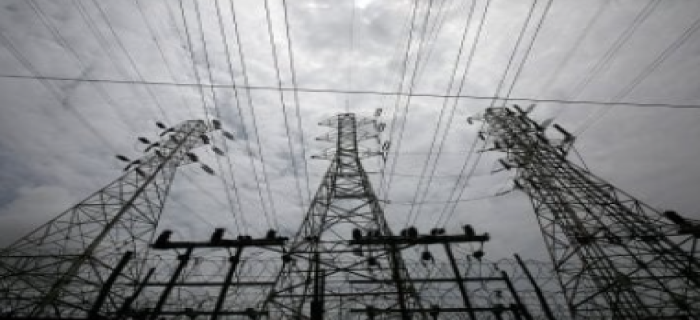
Government Official: Peak power demand is projected to increase by 15 GW annually over the next six years
11 Sep 2024
New Delhi: A senior government official announced on Friday that power demand in India is expected to increase by 15 GW annually over the next six years, a significant rise from the 11 GW per year observed over the past decade. By 2030, additional demand is projected to be around 85 GW during solar hours and over 90 GW during non-solar hours.
Additional Secretary of Power, Srikant Nagulapalli, speaking at an Industry Conclave organized by IEEMA, emphasized that meeting this surge will require substantial expansions in coal capacity, as well as advancements in solar, wind, storage, and transmission infrastructure. He noted that while the Compound Annual Growth Rate (CAGR) may not fully reflect this increase, the absolute numbers indicate a significant jump.
Nagulapalli also mentioned that approximately 40 GW of the new capacity will come from storage solutions, including long-duration batteries, which will help address peak demand during non-solar hours. The Ministry of Power aims to achieve a total of 500 GW from non-fossil fuel sources by 2030, with 200 GW already added and an additional 300 GW needed, predominantly from solar and wind energy.
Plans include focusing on renewable energy zones in Rajasthan, Gujarat, Karnataka, and Madhya Pradesh, installing offshore wind farms near Gujarat and Tamil Nadu, and expanding green hydrogen capacity in coastal regions such as Odisha, Gujarat, and Tamil Nadu. The growth in electric vehicles and data centers, along with overall electrification, will drive future demand.
India's grid, capable of transferring 170 GW across the country, will support this expansion. The government is promoting energy storage through pumped hydro storage projects and batteries, with targets of 40 GW for battery energy storage systems (BESS) and 19 GW for pumped storage projects (PSP) in the next six years. New policies and funding mechanisms are being introduced to accelerate these developmentsNew Delhi: A senior government official announced on Friday that power demand in India is expected to increase by 15 GW annually over the next six years, a significant rise from the 11 GW per year observed over the past decade. By 2030, additional demand is projected to be around 85 GW during solar hours and over 90 GW during non-solar hours.
Additional Secretary of Power, Srikant Nagulapalli, speaking at an Industry Conclave organized by IEEMA, emphasized that meeting this surge will require substantial expansions in coal capacity, as well as advancements in solar, wind, storage, and transmission infrastructure. He noted that while the Compound Annual Growth Rate (CAGR) may not fully reflect this increase, the absolute numbers indicate a significant jump.
Nagulapalli also mentioned that approximately 40 GW of the new capacity will come from storage solutions, including long-duration batteries, which will help address peak demand during non-solar hours. The Ministry of Power aims to achieve a total of 500 GW from non-fossil fuel sources by 2030, with 200 GW already added and an additional 300 GW needed, predominantly from solar and wind energy.
Plans include focusing on renewable energy zones in Rajasthan, Gujarat, Karnataka, and Madhya Pradesh, installing offshore wind farms near Gujarat and Tamil Nadu, and expanding green hydrogen capacity in coastal regions such as Odisha, Gujarat, and Tamil Nadu. The growth in electric vehicles and data centers, along with overall electrification, will drive future demand.
India's grid, capable of transferring 170 GW across the country, will support this expansion. The government is promoting energy storage through pumped hydro storage projects and batteries, with targets of 40 GW for battery energy storage systems (BESS) and 19 GW for pumped storage projects (PSP) in the next six years. New policies and funding mechanisms are being introduced to accelerate these developmentsNew Delhi: A senior government official announced on Friday that power demand in India is expected to increase by 15 GW annually over the next six years, a significant rise from the 11 GW per year observed over the past decade. By 2030, additional demand is projected to be around 85 GW during solar hours and over 90 GW during non-solar hours.
Additional Secretary of Power, Srikant Nagulapalli, speaking at an Industry Conclave organized by IEEMA, emphasized that meeting this surge will require substantial expansions in coal capacity, as well as advancements in solar, wind, storage, and transmission infrastructure. He noted that while the Compound Annual Growth Rate (CAGR) may not fully reflect this increase, the absolute numbers indicate a significant jump.
Nagulapalli also mentioned that approximately 40 GW of the new capacity will come from storage solutions, including long-duration batteries, which will help address peak demand during non-solar hours. The Ministry of Power aims to achieve a total of 500 GW from non-fossil fuel sources by 2030, with 200 GW already added and an additional 300 GW needed, predominantly from solar and wind energy.
Plans include focusing on renewable energy zones in Rajasthan, Gujarat, Karnataka, and Madhya Pradesh, installing offshore wind farms near Gujarat and Tamil Nadu, and expanding green hydrogen capacity in coastal regions such as Odisha, Gujarat, and Tamil Nadu. The growth in electric vehicles and data centers, along with overall electrification, will drive future demand.
India's grid, capable of transferring 170 GW across the country, will support this expansion. The government is promoting energy storage through pumped hydro storage projects and batteries, with targets of 40 GW for battery energy storage systems (BESS) and 19 GW for pumped storage projects (PSP) in the next six years. New policies and funding mechanisms are being introduced to accelerate these developments



leave your comment